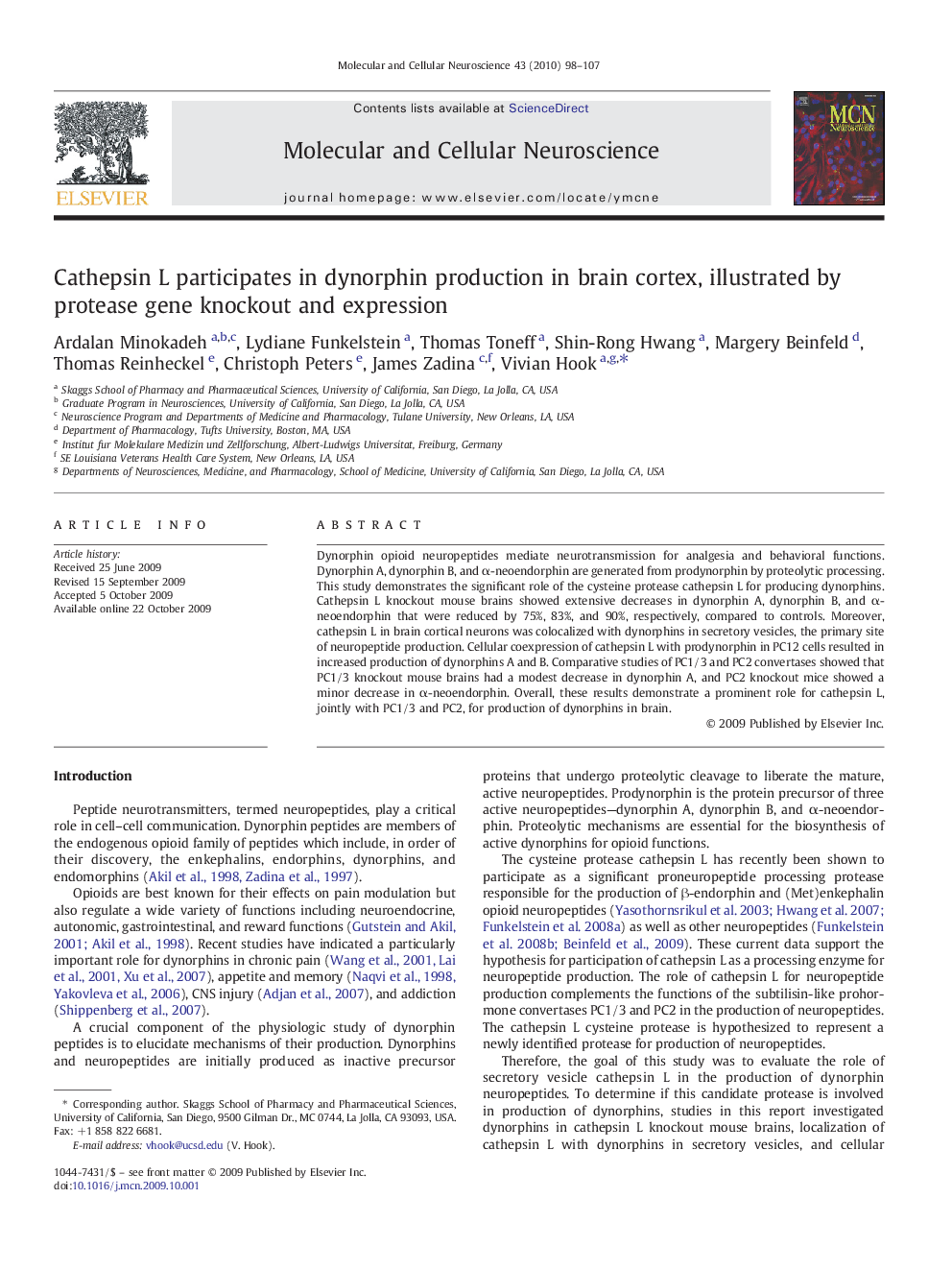| Article ID | Journal | Published Year | Pages | File Type |
|---|---|---|---|---|
| 2198904 | Molecular and Cellular Neuroscience | 2010 | 10 Pages |
Dynorphin opioid neuropeptides mediate neurotransmission for analgesia and behavioral functions. Dynorphin A, dynorphin B, and α-neoendorphin are generated from prodynorphin by proteolytic processing. This study demonstrates the significant role of the cysteine protease cathepsin L for producing dynorphins. Cathepsin L knockout mouse brains showed extensive decreases in dynorphin A, dynorphin B, and α-neoendorphin that were reduced by 75%, 83%, and 90%, respectively, compared to controls. Moreover, cathepsin L in brain cortical neurons was colocalized with dynorphins in secretory vesicles, the primary site of neuropeptide production. Cellular coexpression of cathepsin L with prodynorphin in PC12 cells resulted in increased production of dynorphins A and B. Comparative studies of PC1/3 and PC2 convertases showed that PC1/3 knockout mouse brains had a modest decrease in dynorphin A, and PC2 knockout mice showed a minor decrease in α-neoendorphin. Overall, these results demonstrate a prominent role for cathepsin L, jointly with PC1/3 and PC2, for production of dynorphins in brain.
